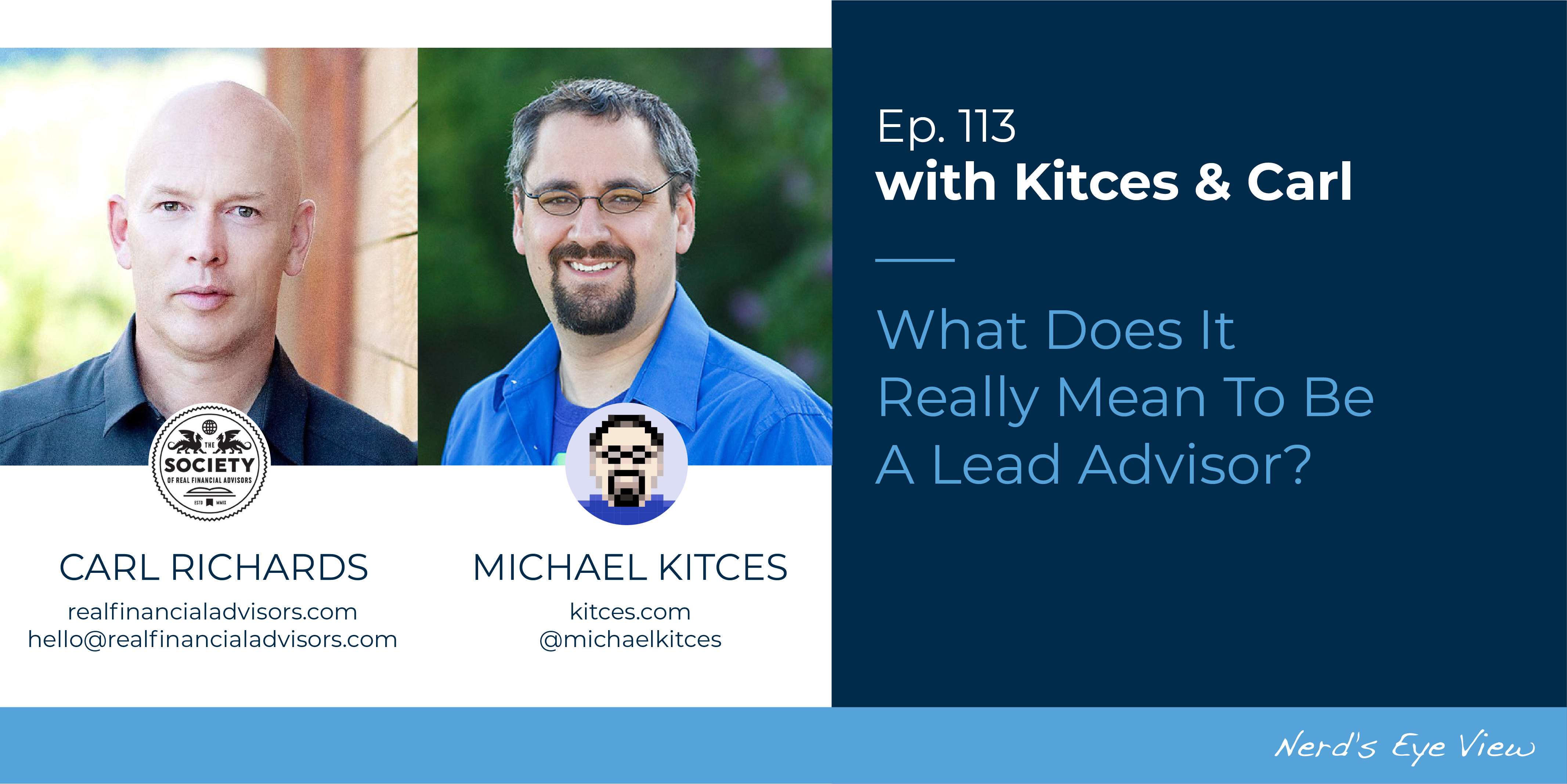While advancing a career in any industry can be challenging, the lack of formal career development programs offered in the workplace for associate advisors can make it particularly difficult for them to gain the experience they need to become lead financial advisors. And since managing the client relationship – a key responsibility for lead advisors – relies so heavily on nuanced ‘soft’ skills that are gained only through direct experience, finding ways to get hands-on experience is crucial for associate advisors to demonstrate their value and gain the skills to advance in their careers.
In our 113th episode of Kitces & Carl, Michael Kitces and client communication expert Carl Richards discuss what it means to be a lead advisor, the paths associate advisors can take to advance into a lead advisor role, and how to communicate career growth goals with senior advisors.
While different firms may use different titles, the common theme of all lead advisor roles goes beyond providing advice to the client to managing the client relationship. This means actively engaging with clients to create an exceptional client experience, managing expectations, ensuring that questions are answered, and resolving issues in a timely manner. And even though there may be numerous books on managing relationships, there are few resources that actually offer associate advisors the opportunity to apply the information in the workplace. Which means it’s essential for them to take a proactive approach to find those opportunities, most often in the forms of hands-on experience (e.g., working with clients directly) and observation (e.g., participating in client meetings led by senior advisors).
For associate advisors who don’t (yet) have the opportunity to work directly with clients, communicating their career goals and positioning themselves as an asset that lead advisors find valuable can benefit both the associate and lead advisor. For example, the associate can ask to gain experience by attending meetings and taking meeting notes; this allows the lead to focus more on the client, who can also ask the associate to draft follow-up emails. And by asking for increasing responsibility to handle tasks that smaller clients may need, associate advisors can eventually gain the confidence of lead advisors to be permitted to gradually take over those relationships, freeing the lead advisor’s time to focus on the more complex needs of larger clients.
Ultimately, the key point is that a proactive approach to seek hands-on experience can position associate advisors for a successful transition into the role of a lead advisor. Becoming more involved in client relationships can demonstrate their dedication to the firm while gaining the valuable experience they need to advance in their careers. And by clarifying and communicating their goals for professional growth, associate advisors can also assess how the firm will support their growth aspirations or whether considering opportunities elsewhere might make more sense… helping them to create a better, more fulfilling career as a financial advisor!


